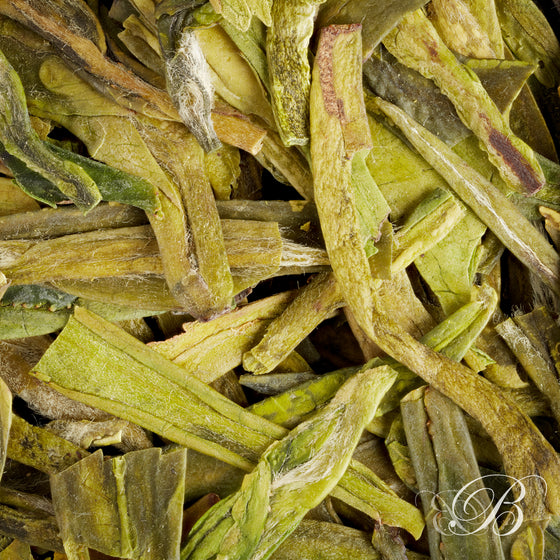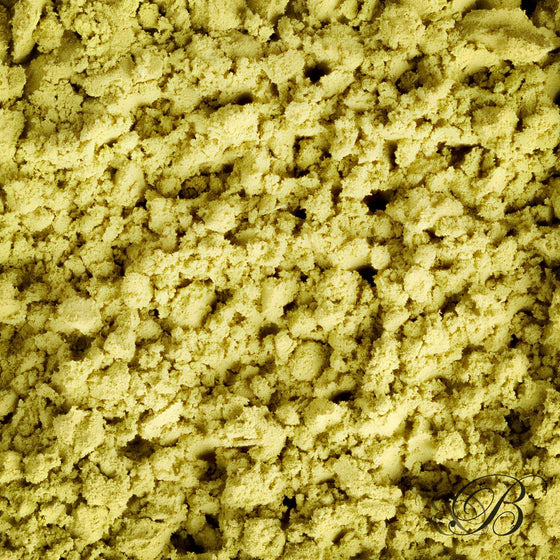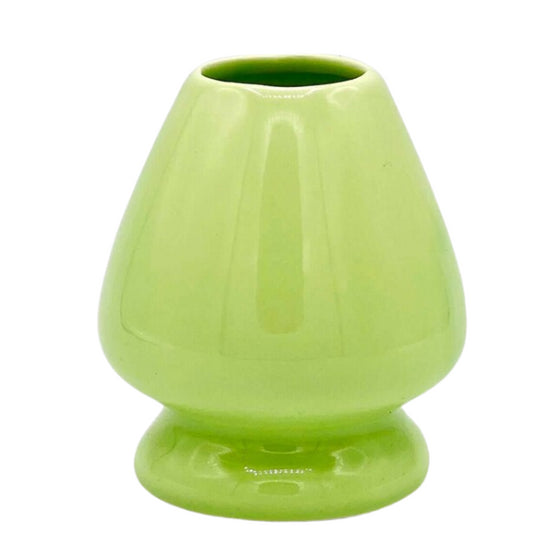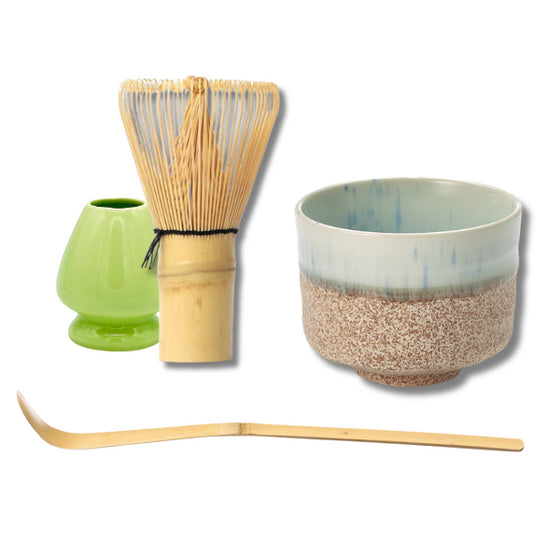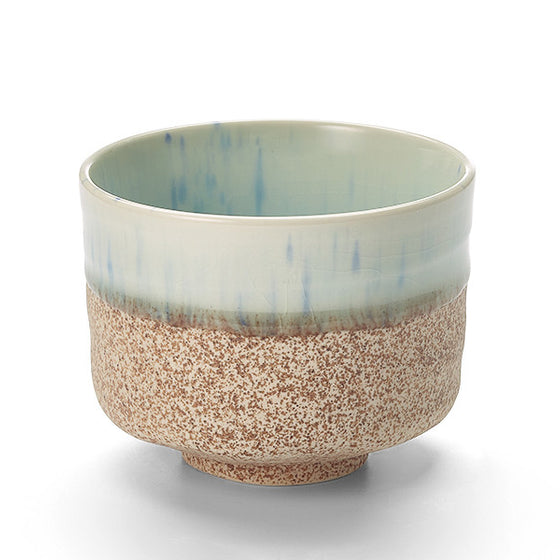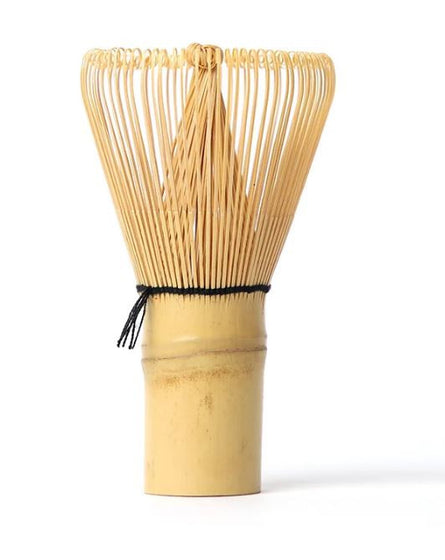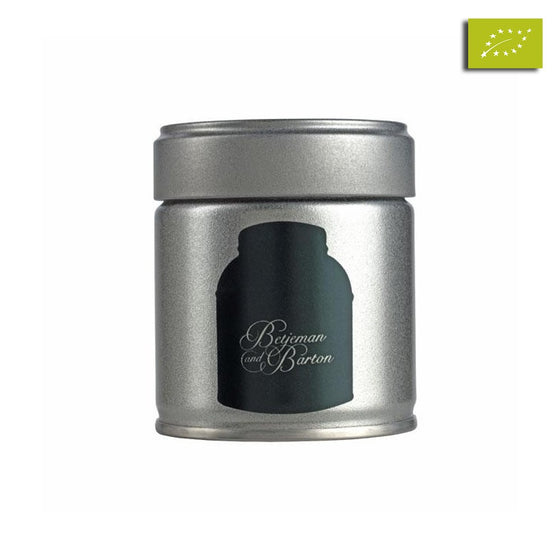Where does Matcha come from?
While the tea plant, or Camellia Sinensis, is native to China, Matcha tea is part of Japan's culinary heritage. Legend has it that it was imported to Japan by a Zen master, the monk Eisai, during the 12th century, under the influence of Chan Buddhism.
Forgotten in China, the tradition of powdered tea continued in Japan. From the 16th century onward, Matcha became the star of the Japanese tea ceremony called chanoyu, the main principles of which were formulated by the tea master Sen no Rikyū.
How to recognize an authentic Matcha?
A high quality Matchais a high-end tea, as it is produced by hand and through demanding processes. A luxury drink par excellence, it is available in different quality grades, the main ones being “ceremonial,” “premium,” and “culinary.”
With little or no bitterness, “ceremony” Matcha tea is distinguished first by its deep green powder and its characteristic “umami” flavor. It is best enjoyed straight with water, in keeping with Japanese tradition.
The use of “premium” Matcha is suitable for making recipes in which Matcha is the main ingredient, like Matcha latte. Its taste is slightly more bitter than that of “ceremony” tea, while its powder is greener than that of “culinary” tea. More yellow and bitter than the others, this grade is finally reserved for preparations to which Matcha brings only a touch of fantasy and originality.
What are the benefits of Matcha tea?
Unlike loose leaf green tea,Matcha powder is consumed in its entiretyA cup of this Japanese tea allows you to fully benefit from its anti-inflammatory and antioxidant properties.
Primarily known as an energy booster due to its higher theine content than traditional brewed tea, Matcha also possesses relaxing properties linked to L-theanine. This amino acid brilliantly balances the effects of theine, and it also has anti-stress properties that certainly justify the Buddhist monks' attraction to this unique green tea.
Vitamins A, C and E, potassium, manganese, iron, zinc, calcium: Matcha also stands out as a cocktail of vitamins and minerals, enough to naturally strengthen your immune system without compromising your daily taste pleasure.
How to prepare your Matcha tea properly?
Traditionally,Matcha is prepared with hot water. A few simple but precise gestures then give you the possibility of concocting cups whose delicacy equals their intensity. Betjeman & Barton also offers you acomplete Matcha kitThis set includes a ceramic bowl, a bamboo whisk, a porcelain whisk rest, and a bamboo spatula to simplify your Japanese tea preparation. These traditional accessories are also available individually on our website, depending on your tastes and needs.
For a perfect tasting, take your Matcha bowl and pour in a little water and about 1g of powder, the equivalent of a teaspoon. Then pour hot water (70°C) over your tea, then whisk vigorously until a fine foam forms on the surface. In just twenty seconds, M-shaped movements with your "chasen" (bamboo whisk) allow you to dilute the Matcha without lumps and lightly foam the powder, for a very sensory result.
In summer, your Matcha tea becomes a delicious iced drink: prepare it following the same rituals and add ice cubes for maximum cooling. Adjust the amount of water and powder to suit your taste, whether you're drinking it hot or cold.
Matcha latte, a sweet and tasty drink for a natural energy boost
Are you unfamiliar with the taste of plain Matcha or simply looking for something different? Then consider a Matcha latte to (re)discover the flavor of this iconic green tea of Japanese culture. To do this, mix 1g of powder with a drop of milk, then whisk your drink. Here again, a few ice cubes will give you a decidedly pleasant iced beverage.
Good news: Matcha latte adapts to all drinking habits and can also be made with any plant-based beverage of your choice, such as almond, soy, oat, or rice milk. Add sugar or any other sweetener, according to your taste, for a more indulgent drink.
Also try our “Matcha-Sencha Latte”, a green tea designed for tea drinkers looking for time-saving and practicality. Discover the recognizable notes of matcha on a base of sencha green tea, for undeniably irresistible cups.
Matcha in the kitchen: some recipe ideas
The finest connoisseurs appreciatethe refinement of Matcha in its raw stateIncreasingly popular, this green tea is now enjoyed in a variety of sweet preparations, to the delight of green tea fans and other curious people in search of new flavors.
Because it's ground, Matcha tea is easy to incorporate into a variety of recipes, from breakfast smoothies to afternoon tea pastries. While premium tea is ideal for no-bake desserts, culinary Matcha is best suited to baked cakes, crepes, waffles, pancakes, and cookies. Pair it with white chocolate or raspberry for unique desserts with a harmonious flavor.
How to properly store your Matcha tea?
For optimal preservation of your Matcha over the course of several cups, we advise you to protect it from all elements likely to alter its taste and green color: light, heat, humidity, open air, etc.
Stored in its original container, your tea will remain authentically delicious every time. It's also possible to store your Matcha in a cool place if the room temperature exceeds 25°C. In this case, we encourage you to remove it from the refrigerator a few minutes before enjoying it to ensure a perfect taste experience.
Once opened, your Matcha tea may oxidize slightly over time. After several months of opening, you can then use your powdered green tea in your pastries and other Japanese-inspired treats.
If there is one tea that is unconditional when we talk about ancestral tea ceremonies, it is certainlyMatcha teaA shade tea found in powder form, Matcha is an excellent green tea that stands out from its cousins due to its unique characteristics.
Treat yourself to a moment and imagine yourself in a traditional wooded garden: the ceremony can begin, you are ready to discover and taste your Matcha tea finely selected by Betjeman & Barton.
Matcha tea, the paragon of the tea ceremony
Without a doubt,Matcha tea is not a tea like the othersIts flavor, its appearance, the rituals associated with it make it a unique tea, a prestigious tea.
Made from the Camellia Sinensis tea plant, Matcha tea belongs to the Japanese green tea family. In Japan, it is a highly regarded tea, particularly because it is used in the traditional tea ceremony, Cha No Yu.
The specificity of this tea lies in its method of preparation: it is obtained from leaves reduced to powder, which is why we say that Matcha tea is a grinding tea.
This tea variety is also called a shaded green tea.obtain the characteristic Matcha powder, Japanese producers actually practice shade cultivation: three weeks before the leaves are picked, the tea plants are protected from the sun using mats or arbors. By slowing down the photosynthesis process, the transformation of theanine into tannins slows down, allowing Matcha to stand out with its soft roundness and its vegetal and fruity notes.
Typically, taste is described using four adjectives: sweet, salty, bitter, and sour. However, Matcha tea is so unique that it has given rise to a fifth flavor called “Umami.”
Prepare your Betjeman & Barton Matcha tea
Because it comes in powder form, Matcha tea isn't brewed, but whisked in a bowl. To enjoy it, you need to vigorously mix the powder with hot water to obtain a texture that resembles pea puree!
The whisk used for this operation is made from bamboo: you can of course find this essential accessory at our House and thus start preparing an excellent Matcha.
Don't hesitate to browse our website to discover our selection of Matcha teas. Discover several types of Matcha tea, all originating from Japan and cultivated with the greatest care in the purest respect for tradition. To prolong the pleasure, you will also find an exclusive creation from Betjeman & Barton that will allow you to enjoy a Matcha-Sencha-Latte! No need to create your own preparation, we offer you our own recipe and, we promise you, it's a truly addictive delight!
It is now up to you toprepare your Matcha teaand discover a new ritual, as soothing as it is deliciously unique.
